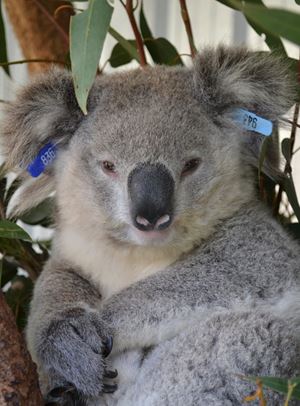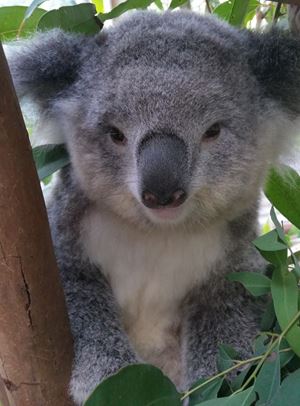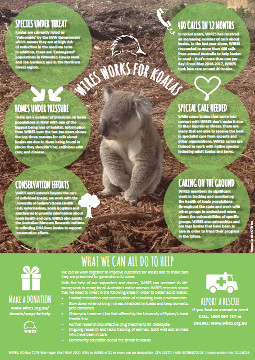Blog
Contact media@wires.org.au for enquiries or call 0416 272 153.
For the latest updates on bushfire recovery projects and emergency response
Read WIRES Emergency Recovery Plan and WIRES National Emergency Response Plan
Willow and Hunter on road to recovery with WIRES
WIRES (NSW Wildlife Information, Rescue and Education Service Inc.), Australia’s largest wildlife rescue organisation, is there 365 days a year to rescue animals that have lost their homes. In recent years, WIRES has received an increasing number of calls about koalas. In the last year alone, WIRES responded to more than 480 calls from around Australia to help koalas in need – that’s more than one a day!
While some koalas that come into contact with WIRES don’t make it due to their injuries or illness, there are many that are able to receive the best in specialist care from experts and other organisations.
The reality is that caring for native animals like koalas requires special skills and a whole team of special people. Since May last year, WIRES has taken into care around 40 koalas.


“Within a week of the surgery, on a good dose of painkillers, she was showing her personality and she put on 900g in the first two weeks which was really positive,” said WIRES carer Cate.
Over the next six weeks Willow slowly healed. In mid-October she had x-rays to see how the arm was healing and the vet was happy with how things were going. Later on she was able to have the pin removed and begin a regime of physiotherapy.
When in the critical stage of care, from September through to January this year, Willow was housed in a collapsible crate about the size of a single bed and a metre high. This provided her enough room to feel at ease but not enough to injure herself further. She was eating five different types of eucalypt which Cate collected each day and rotated so that Willow had a variety of leaves.
After moving through the critical stage of care, Willow moved into a special outdoor aviary where she is strengthening her arm and practising the skills she will need to continue her life in the wild.
At around 2-3 years of age, Cate says the koala has a “great temperament”.
“Willow has been an absolute delight to have in care. I have had some heart breaks and some triumphs but this little koala has been through so much,” she said.
Cate is also carer to young Hunter, a 1-2 year old male koala who should ideally still be riding on his mother’s back.
“He was found bailed up in a tree by three dogs, on someone’s property,” said Cate, adding that his mother was nowhere to be seen.
Thankfully the property owner called WIRES and he was rescued just in the nick of time.
“He was in a poor state when I got him,” recalled Cate. “But after a check-up at the University he was found to be healthy although a bit too young to be out on his own.”
Hunter is currently in an outdoor aviary where he will remain until he is old enough to fend for himself in the wild.
 If you see a koala or other native animal that needs help, call WIRES on 1300 094 737 or make a report online.
If you see a koala or other native animal that needs help, call WIRES on 1300 094 737 or make a report online. Search
Newsletter
Stay in touch and get our regular rescue stories, WIRES updates and a free copy of our 15 Ways to Help Wildlife ebook
Recent Posts
- Emergency Response Training for Wildlife Volunteers
- WIRES Introduces New Wildlife Rehabilitation Governance Courses in Collaboration with NPWS
- Community Support for Post-Bushfire Recovery of Wildlife in the Greater Blue Mountains
- Research Grants Program-2023 Recipients Announced
- National Koala Conference
- Nature Conservation Council's Bushfire Conference
- Support Stronger Nature Laws
- Helping Endangered Cockatoos: WIRES Grant Success Story
- Landmark Conservation Project Ensures The Future of The Northern Bettong
- Wildlife Road Collisions Unveiled
